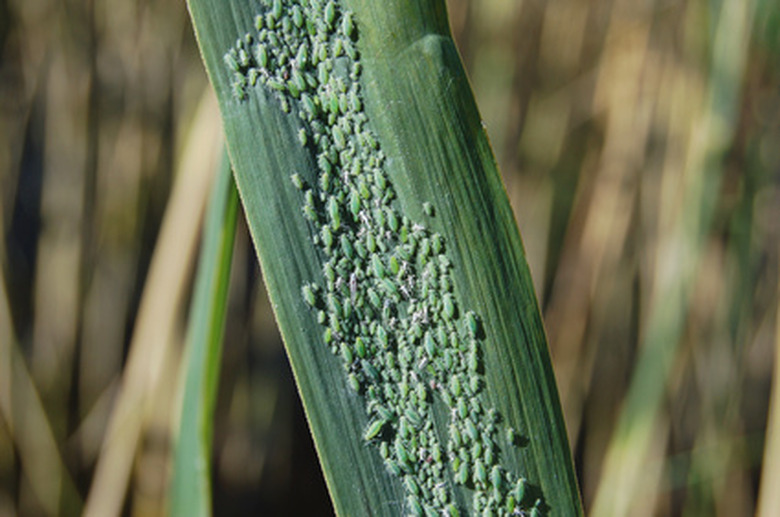Autumn Joy Sedum Bugs
Sedums are a low-maintenance, drought-tolerant perennial favored by many gardeners. The Autumn Joy sedum is a clumping sedum that can grow to 3 feet. It flowers in the late summer, providing a splash of color to the garden after many other plants have ceased blooming. Autumn Joy is also a favored perennial because it is bothered by few pests.
Aphids
Aphids are small, pear-shaped insects. You will typically find them in clusters on the underside of plant leaves or around new flower buds. They eat new growth on plants, and will suck the sap out of the Autumn Joy leaves. You can eliminate aphids by hosing the plant off. An insecticide can be applied if simple water doesn't work. Ladybugs are natural predators to aphids. If you do use an insecticide try not to spray more than necessary as you risk killing your garden's beneficial bugs.
- Sedums are a low-maintenance, drought-tolerant perennial favored by many gardeners.
- You can eliminate aphids by hosing the plant off.
Fungus Gnats
Fungus gnats are most often seen on indoor houseplants. However, they can also be found in your garden's soil. At their worst, these gnats will attack your plants roots. This will cause your plant to wither, brown and perhaps die. The best way to deal with fungus gnats is good garden maintenance. The gnats prefer moist soil and debris. Autumn Joy is a drought-tolerant plant. Therefore, keep the soil relatively dry between waterings. Pick up debris such as dropped leaves from the base of plants to maintain air flow across the top of the soil.
- Fungus gnats are most often seen on indoor houseplants.
- The best way to deal with fungus gnats is good garden maintenance.
Snails and Slugs
Snails and slugs are perhaps the most common garden pests. Both prefer moist areas of the garden. Keep the soil dry, keep the debris picked up and maintain good air flow around your plant to minimize snails and slugs. If you have snails and slugs in your garden or on your Autumn Joy you can try several methods of control, including trapping with small saucers of beer or baiting. If you have pets or children, read bait product labels carefully as they can be harmful if swallowed.
Plant Health
Healthy plants are the most resistant to pest problems. Be sure you plant your Autumn Joy in full sun and well-draining soil. Water deeply, but not often to prevent too much moisture from building up in the soil, which will attract pests. Monitor your plant regularly for aphids, gnats, slugs and snails. Catching and controlling a pest problem early increases your chances of restoring your plant to its full health.
- Snails and slugs are perhaps the most common garden pests.
- If you have snails and slugs in your garden or on your Autumn Joy you can try several methods of control, including trapping with small saucers of beer or baiting.
Plant Care
From year to year Autumn Joy sedums require only minimal maintenance. At the end of the season, cut back all stalks to the ground. New growth begins at the roots each spring. Removing the old stalks prevents moisture buildup and stimulates new growth processes. Mulch in the fall and spring to minimize weed growth. If your Autumn Joy becomes too big, dig in the fall and divide the root ball into smaller clumps. You can replant those clumps throughout your garden.
- From year to year Autumn Joy sedums require only minimal maintenance.
- Removing the old stalks prevents moisture buildup and stimulates new growth processes.
